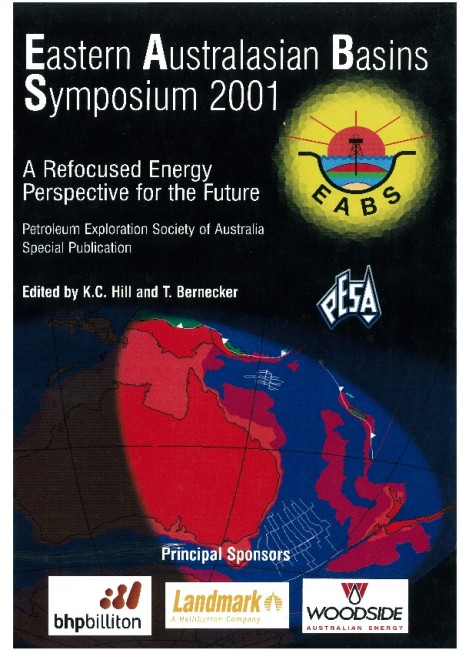Publication Name: Eastern Australian Basins Symposium 2001
Authors: G.W. O'Brien, D. Heggie, G. Lawrence and A. Williams
Date Published: November 2001
Number of Pages: 32
Reference Type: Magazine Article
Abstract:
Over the last decade, the Australian Geological Survey Organisation (AGSO) and its industry partners have acquired and interpreted a wide range of geochemical and other remote sensing data in south-eastern Australia includincr aeochemical sniffer and Synthetic Aperture Radar (SAR) data. From this work, a broad, seal-capacity hierarchy has been established for a number of basins in the region. This hierarchy has implications for both the prospectivity of the basins and the general approaches that should be taken in evaluating their migration characteristics.The Gippsland Basin is by far the most 'seepy' in south-eastern Australia, with a range of seeps detected using both sniffer and SAR data. Most of the seeps in the Gippsland Basin were located in relatively shallow water depths, around the flanks of the central deep. Clear evidence for active, present day migration and seepage was seen using both sniffer and SAR data along the Rosedale Fault System. This seepage extended well to the north of the Wahoo-1 well and also east of the Sole-1 exploration well, into areas with no well control. The distributionof the seepage in the Gippsland Basin, taken in conjunction with the large size of the (sniffer) anomalies, suggest that leakage is possibly controlled by a combination of top seal (principal component) and fault (minor component) failure. Seepage was essentially absent along the bounding fault systems in the southern part of the basin. Significantly, no SAR slicks were detected in the deep-water parts of the Gippsland Basin, an observation which perhaps increases the uncertainty associated with the presence of a mature, oil-prone source in this region.
In contrast to the shallow water Gippsland Basin, seepage was generally absent in the North Bass and Bass Basin, an observation which, given the significant data coverage in these areas, is probably best attributed to a combination of generally high fault and top seal capacity, at least at a regional scale. A similar complete lack of seepage characterised the Cambrian Stansbury Basin in South Australia, though whether this is due to a lack of charge, or high seal capacity, is unknown. Similarly, the eastern Otway Basin showed little evidence for hydrocarbon seepage, even considering the limited amount of sniffer data acquired.


